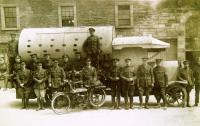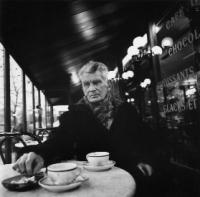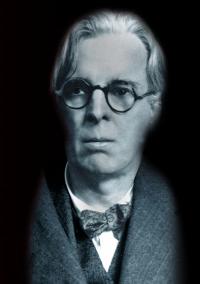Inventing 1916: words, deeds and unfinished business
Published in 20th-century / Contemporary History, Features, Issue 5 (Sept/Oct 2011), Revolutionary Period 1912-23, Volume 19
One of three improvised armoured personnel carriers that saw action at Easter 1916. The vehicles were put together at the Great Southern and Western Railway works at Inchicore from the chassis of Daimler flat-back lorries from the Guinness brewery and locomotive smoke-boxes. (Timothy Walls)
Shortly after the Easter Rising, a traumatised Englishwoman—who had the misfortune to happen upon some rebels as she entered the GPO to buy some stamps—related her dramatic ordeal to the Irish Independent:
‘Much to my consternation I found myself almost immediately placed under arrest by an officer of the Irish Volunteers. I was then taken before General Pearse [who] said to me, “We have formed an Irish Republic to-day. You had better remain here . . . In another twenty-four hours all Ireland will be in our possession. The change will be made like a flash of lightning”.’
Why the putative president of the provisional republic might have taken time out from leading a dangerous rebellion to explain himself to an innocent bystander goes unexplained, although—like that inevitable action-film sequence in which the villain inexplicably exults in finally and needlessly revealing his fiendish plans—it does help her story along. And the Englishwoman’s ‘vivid’, if questionable, narrative continues in a similarly affected vein: ‘Pearse spoke most confidently of a German invasion, not only in Ireland, but also on the English coast’.Her recollection, if rancorous, is not, however, devoid of sympathy for the rebels: ‘I was put amongst other women and the rebels treated us with great courtesy. Beds and couches were supplied, and we had the best of everything to eat,’ she elaborates. This ambiguity continues throughout the piece; in particular, the woman’s fear seems tempered with excitement:
‘When the shelling began on the Friday there was tremendous excitement. The women became panic-stricken and cried to be set at liberty . . . Shortly after midnight we were taken to the back of the Post Office and helped over a wall. Two women in front of me were shot dead, and I fell into the arms of an officer.’
In half-horrified, half-exhilarated tones, the anonymous damsel in distress becomes the heroine of her own theatricalised yarn—a woman from the right side of the tracks who strayed into the wrong side of town and ended up liking her captors a little more than she might have intended, swooning on cue into a chivalrous officer’s arms. In modern parlance, she might be adjudicated the victim of ‘Stockholm syndrome’, in a tabloid extravaganza entitled ‘My post office hell’. The story is, of course, a sensational one, and perhaps even, at least partly, apocryphal.But what the Englishwoman does capture is the Rising’s abiding theatricality. The fantastic events of 1916—a dramatic, almost cinematic, pantomime with guns, led by lofty but quixotic visionaries—were captured, perhaps most vividly, in James Stephens’s dispatches on the Rising. The insurrection in Dublin (1916) mustered all his literary talent to match with words the far from prosaic happenings of Easter Week; the strangeness of it, and the unintentional comedy, resonate throughout Stephens’s palpable eyewitness account. ‘Sweetshops were the favourite mark of the looters,’ he reports at one point. ‘There is something comical in the looting of sweetshops—something almost innocent and child-like.’ Like Stephens’s recollection, the tale of the ill-starred woman buying stamps blurs the lines between the literary and the real, the prosaic and the fantastic, in a way that the Rising did too: as a rebellion led by poets and dreamers, 1916 was, as Nicholas Grene puts it, ‘an event planned with conscious theatricality’.
Femmes fatales
O’Casey may have been thinking of the Independent’s stamp-buying female Walter Mitty when he imagined the hapless, hysterical southside suburbanite who stumbles unwittingly—and comically—into the disarray of north-inner-city Dublin in The plough and the stars (1926):
Woman: And what am I gowing to do? Oh, isn’t this awful? . . . I’m so different from others . . . The moment I hear a shot, my legs give way under me—I cawn’t stir, I’m paralysed—isn’t it awful?
Fluther (moving away): It’s a derogatory way to be right enough . . . I have to go away, ma’am, to thry an’ save a few things from th’ burnin’ buildin’s.
O’Casey’s point is that both Fluther and the wealthy southsider are equally ensconced in their own narrowly selfish concerns—his, looting; hers, saving her own skin—while both of them are largely and ironically oblivious to Ireland’s collective plight, its national struggle, at the time of its supposed historical apotheosis.
![One of the early scenes from Ken Loach’s The wind that shakes the barley (2006)—train-driver and trade unionist Dan (Liam Cunningham, centre) refuses British soldiers access to the train. He later becomes an IRA volunteer and, while expressing opposition to the Treaty, reminds fellow volunteers that they are ‘paupers just like me’, and that ‘the IRA are [now] backing the landlords and crushing people like you and me’. (Pathé Films)](/wp-content/uploads/2013/03/Inventing-1916-words-deeds-and-unfinished-business-2.jpg)
One of the early scenes from Ken Loach’s The wind that shakes the barley (2006)—train-driver and trade unionist Dan (Liam Cunningham, centre) refuses British soldiers access to the train. He later becomes an IRA volunteer and, while expressing opposition to the Treaty, reminds fellow volunteers that they are ‘paupers just like me’, and that ‘the IRA are [now] backing the landlords and crushing people like you and me’. (Pathé Films)
The failure of triumph
Johnston also points to another concern, which writers of the Rising have repeatedly sought to stress—the more general elision of working-class reality from misty-eyed accounts of exalted rebels. When Emer expresses exasperation at the failure of an assembled crowd to cheer the reading of the Proclamation—‘Don’t they know they’re free?’ she fumes—McCarthy suggests the real concerns of Dublin’s tenement-dwellers. Just as the crack of glass and ‘scattered cheering’ are heard emerging from a nearby sweetshop, a waitress asks ‘What’s that?’, to which MacCarthy wittily quips, ‘The birth of a nation’.Johnston’s characterisation of the newly proclaimed republic as a place where politically oblivious proletarians are more interested in ill-gotten gains than in listening to lofty rhetoric hints at more contemporary concerns: the enduring problem of urban poverty and tenement degradation in 1950s Ireland made a mockery of the Proclamation’s social aspirations to ‘equal rights and equal opportunities’ for ‘all [the Republic’s] citizens’. And leftists’ anger at how 1916 had been betrayed by conservative forces pervades later work. Ken Loach makes a similar point in The wind that shakes the barley (2006), in which trade unionist turned IRA volunteer Dan reminds fellow volunteers that they are ‘paupers just like me’, and that ‘the IRA are [now] backing the landlords and crushing people like you and me’. Such frank discussions of the real social dynamics underlying a supposed revolution are, Loach suggests, still relevant to a society eager to whitewash and sanitise its very complex historical narrative.
History and histrionics
Yeats’s great tribute to the 1916 leaders, ‘enchanted to a stone/To trouble the living stream’, is perhaps the most enduring and haunting commentary on the Easter Rising, for in all his uncertainty about the wisdom of their actions—about whether ‘England may keep faith/For all that is done and said’—it is the resolute doers of deeds that he lionises. Action, Yeats seems to suggest, speaks louder than words. But much of what has been written in the literature of 1916 tends to highlight how important words are in the retelling and reinvention of such events. Bernard MacLaverty’s Cal (1983) voices such concerns in a particularly pithy exchange set in the more recent phase of conflict:
‘“But it is not like 1916.” “It wasn’t like 1916 in 1916.” There was a long silence.’

Samuel Beckett’s Murphy (1938) underscores how inextricably linked Ireland’s theatrical rebellion is with its rebellious theatre. (John Minihan)
History’s refashioning of past events, he suggests, muddies the waters of rational record. As 1916 became more profoundly potent in Irish culture, it also became less real. In this regard, Yeats is not so easy to pin down as his epic poem might suggest; he had himself emphasised history’s fantasy quality in The dreaming of the bones (1919). In the play, a rebel fugitive in 1916 is haunted by ghostly lovers, whom he later discovers to be Diarmuid MacMurrough and Dervorgilla. In history and legend, this couple’s liaison is blamed for triggering the twelfth-century Anglo-Norman invasion of Ireland. Thus the rebel is faced with the spectre of a primordial sin, an originative historical rupture, which led, however tenuously, to his own, contemporary impasse. Locked in a purgatorial loop in which they must observe the recurring consequences of their illicit affair, the infamous penitential couple are doomed, indefinitely, to ‘but live through their old lives again’, unless they can secure the forgiveness of a member of their own ‘race’—which ultimately proves elusive. The image of the obdurate, unforgiving present being haunted by a remorseful, but passionate past provides a metaphor for what the Easter Rising had itself self-consciously sought to symbolise: national pride rising, unreconstructed and unbowed, from the ashes of a shameful legacy. But Diarmuid and Dervorgilla’s presence also underscores the unremitting folly of history—of men and women squabbling over the bones of old stories, attempting to exorcise old ghosts.

W.B. Yeats—‘Did that play of mine send out/Certain men the English shot?’ Paul Muldoon later responded: ‘If Yeats had saved his pencil-lead/would certain men have stayed in bed? For history’s a twisted root/with art its small, translucent fruit’. (National Library of Ireland)
This association of the rising with abstract fantasy and otherworldly fantasisers is another constant theme in writing about 1916. It is there in O’Casey, in Clitheroe’s devotion to his ego and contingent disavowal of the real world, for ‘Ireland is greater than a wife’. It is there too in Paul Vincent Carroll’s The conspirators (1934; formerly The coggerers), in which a dead rebel’s mother laments her son’s devotion to a utopian ideal, Mother Ireland, ‘that oul’ bitch that wanders O’Connell Street’. Yet the rebellion often appears as a moment of ascetic perfection in Irish history, for reasons that Iris Murdoch guessed at in her novel The red and the green (1965). The rebels ‘had a beauty which could not be eclipsed or rivalled. They had been made young and perfect forever.’ For Samuel Beckett’s Neary, in Murphy (1938), this imagery of exalted martyrdom is so reprehensible that he is compelled to attack it. Observing the statue of Cuchulainn in the GPO, erected to commemorate the spirit of the 1916 Rising, Neary becomes incensed and comically and repeatedly bangs his head against the figure’s buttocks (Oliver Sheppard’s statue in fact has no buttocks), because ‘that deathless rump was trying to stare me down’. Ireland’s pantheon of dead heroes, Beckett suggests, weighs heavily on the shoulders of its ordinary citizens. And this is a cultural as well as a historical burden; Murphy, the main character in the novel, says that his last wish is to have his ashes flushed down the toilet during a performance at the Abbey Theatre. The solemnity of both types of national theatre—the theatre of war and the National Theatre’s stage—is satirised, and Beckett underscores how inextricably linked Ireland’s theatrical rebellion is with its rebellious theatre.Yeats had asked in his 1938 poem, The man and the echo (in typically self-aggrandising tones), ‘Did that play of mine send out/Certain men the English shot?’ Paul Muldoon responded much later, scoffing: ‘If Yeats had saved his pencil-lead/would certain men have stayed in bed? For history’s a twisted root with art its small, translucent fruit’. W.H. Auden equally protested that ‘poetry makes nothing happen’. But the truth, perhaps, lies somewhere in between, for in the writing that has been so central to Irish history, and in particular the memory of 1916, we observe how poets made history and history, in turn, made poetry. HI
Michael Pierse teaches communications and English at Coláiste Íde College of Further Education. His Writing Ireland’s working class: Dublin after O’Casey was published in 2011 by Palgrave Macmillan.
Further reading:
N. Grene, The politics of Irish drama: plays in context from Boucicault to Friel (Cambridge, 1999).J. Moran, Staging the Easter Rising: 1916 as theatre (Cork, 2006).
















